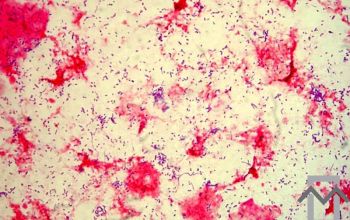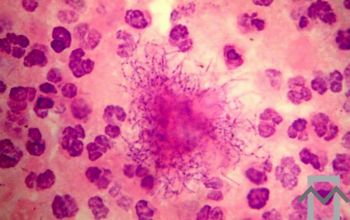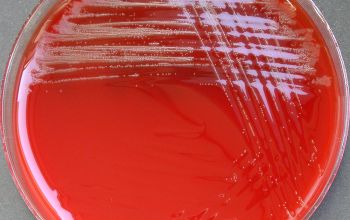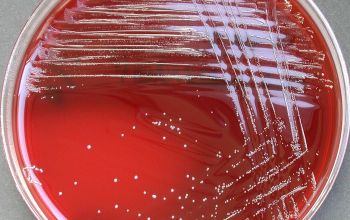Actinomyces odontolyticus (Schaalia odontolytica)
-
General information
Actinomycosis, caused by Actinomyces israelii, less frequent by Actinomyces odontolyticus (Schaalia odontolytica)
Taxonomy
Family: Actinomycetaceae,
Genus: Schaalia odontolytica
Formerly: Actinomyces odontolyticus
Natural habitats
As with all other actinomycotic diseases, A. odontolyticus (Schaalia odontolytica) is an endogenous infection arising from the mucous membranes
Clinical significance
Clinical disease in patients with A. odontolyticus (Schaalia odontolytica) closely resembles disease caused by A. israelii and other actinomyces species.
Infections by A. odontolyticus (Schaalia odontolytica) primarily involve the cervicofacial regions, the chest, abdomen, and pelvis with rare involvement of the central nervous system, bones, and joints
-
Gram stain
Gram-positive rods,
diphtheroid and may be arranged in palisades or
thin filamental and pleomorphic, which are 0.4–1.0 μm wide.
The filaments may be up to 50 μm in length with true branching.
-
Culture characteristics
-
Facultative anaerobic
BA: colonies are small, irregular, whitish and smooth to slightly granular and show a dark red pigment when mature (2–14 days).
This pigmentation is most obvious when the cultures are left standing in air at room temperature after primary anaerobic isolation.
BBAØ: growth
-
-
Characteristics
-
References
James Versalovic et al.(2011) Manual of Clinical Microbiology 10th Edition
Karen C. Carrol et al (2019) Manual of Clinical Microbiology, 12th Edition





